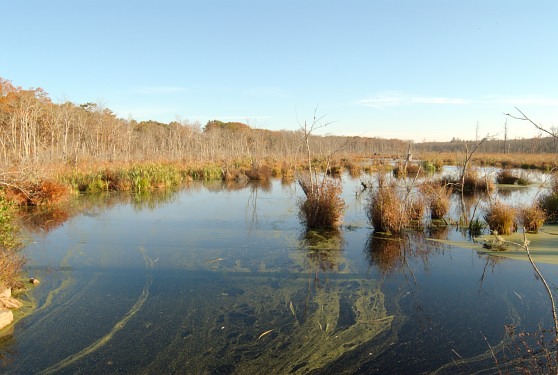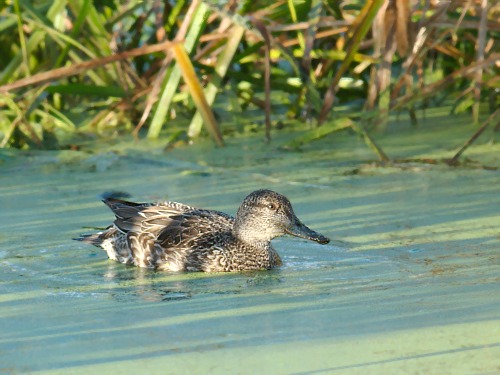South County Bike Path - South Kingstown
Officially known as the William C. O’Neill Bike Path, the bike path is a paved trail that follows the section of the former Narragansett Pier Railroad 7 miles from Kingston Station to Narragansett. The bike path is used by walkers, runners, cyclists and in-line skaters.
The section of the path from Kingston Station to Genesee Swamp is of particular interest to birders since it goes through parts of the Great Swamp Management Area and provides access to mixed forests and freshwater marshes. The small bridge over White Horn Brook provides a nice overlook of Genesee Swamp. It is about 1.4 miles from Kingston Station to Genesee Swamp.
View Larger Map
Location
South Kingstown, RI.Owner/manager
South Kingstown Department of Parks and Recreation 325 Columbia St. Peace Dale, RI 02883
Directions
The trail begins at the Amtrak Train Station on Rt. 138 in West Kingston. The train station and the bike path share the same parking lot. The bike path begins at the south end of the parking lot. To get a little closer to Genesee Swamp, it is possible to park along route 110. However, the area of route 110 immediately adjacent to the bike path is designated as "no parking".
Habitat
Mixed forests and freshwater marsh.

Northern Watersnake
Description
Officially known as the William C. O’Neill Bike Path, the bike path is a paved trail that follows the section of the former Narragansett Pier Railroad 7 miles from Kingston Station to Narragansett. The bike path is used by walkers, runners, cyclists and in-line skaters.

Genesee Swamp
The section of the path from Kingston Station to Genesee Swamp is of particular interest to birders since it goes through parts of the Great Swamp Management Area and provides access to mixed forests and freshwater marshes. The small bridge over White Horn Brook provides a nice overlook of Genesee Swamp. It is about 1.4 miles from Kingston Station to Genesee Swamp.
Best Seasons to Visit
Spring, summer and fall.Birds Most Likely to be Seen

Green-winged Teal
The most productive area for birding along the bike path is Genesee Swamp. The swamp is a good place to listen for Virginia Rails during the mornings and evenings in the spring. Other birds that may be wading in the marsh include Green Heron, Great Blue Heron, Great Egret, Snowy Egret and Glossy Ibis. Several types of ducks frequent the swamp. Wood Duck, Black Duck and Mallards can be seen throughout the summer while Green-winged Teal, Gadwall and occasionally Blue-winged Teal pass through during migration. When the water is low, Least Sandpiper, Solitary Sandpiper and Killdeer can sometimes be seen feeding on the exposed mud. Tree Swallows, Barn Swallows and Northern-Rough-winged Swallows sometimes feed on the insects flying over the swamp, especially during migration. Hairy, Downy and Red-bellied Woodpeckers along with Northern Flicker can be seen year round on the dead trees in the swamp.
A good mix of passerines can be seen along the path, including: Yellow Warbler, Prairie Warbler, Black-and-white Warbler, Blue-winged Warbler, Common Yellowthroat, Red-eyed Vireo, Yellow-throated Vireo, Blue-gray Gnatcathcer, Great-crested Flycathcer and Red-winged Blackbird. Wood thrush and Veery can sometimes be found along the edges of the path. In early spring, American Woodcock can be seen displaying in the late evening along parts of the path.
Birds that May be Seen in Other Seasons
In the winter Golden Crowned Kinglet, Hairy Woodpecker and Brown Creeper can be found along the path.
Potential Obstacles
- The bike path parking is shared with the train station parking, so on busy travel days and busy bike path days the lot can sometimes fill up.
- Deer Flies can be bothersome, especially in July.